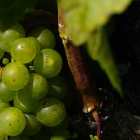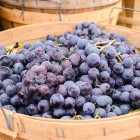Harvest is one of the most exciting times of the year for winemakers, marking the culmination of months of vineyard care and maintenance and the final stages of the journey towards the finished product. But it’s also often a very fraught period, as things can so easily go wrong at the last minute – frost, heatwaves and hail can after all decimate a vineyard quickly.
The grape harvest takes place at the turn of autumn. In the northern hemisphere, this can be any time between the end of August and mid-October, and between late February and April in the southern hemisphere. With vineyards across Europe now preparing for this critical and demanding job, we look at exactly what happens during the harvest season.
When is the right time to harvest grapes?
The term ‘autumn’ (hemisphere dependent) is very much open to interpretation when it comes to grape picking, and the optimal time to harvest grapes depends on numerous factors.
Throughout the growing season, grapes will be carefully monitored until the ideal level of acidity and sugar has been reached, depending on the desired style of wine. This can be measured by equipment such as a refractometer (which measures sugar levels, for example), and by the taste buds of seasoned pros.
The ripening process can last anywhere between 30 to 70 days after veraison (when the fruit on the vine transforms from small hard berries into what we recognise as grapes). Some grapes, such as Tempranillo, ripen quickly, while others like Petit Verdot take much longer. Higher acidity in sparkling wines is more desirable than sugar, while the reverse is true for dessert wines. Region will also play a role. The hottest parts of France such as Corsica will usually begin its harvest earlier than say, the cooler regions of Germany.
However, this can all change at the drop of a hat depending on the weather. Heatwaves, excessive rain and hailstorms can all ruin a crop, so winemakers will follow weather reports with fervour. If poor conditions are forecast the harvest might be brought forward, even if the grapes aren’t at optimal levels yet.
The bottom line is that the date of harvest is rarely – if ever – the same from one year to the next.
Is grape picking done by hand or machine?
Once it’s time to go, wineries and vineyards will often operate 24 hours a day to bring the grapes in, although the picking itself is generally done in the evening or at dawn, when it’s coolest outside. The whole process can take anywhere from a week to over a month.
Hand-harvesting is the traditional method of taking the grape from the vine. It’s a more taxing process but generally results in a higher quality pick, with trained vineyard crews able to properly identify ripened grape clusters and discard underripe or damaged clusters. For some vineyards, hand-harvesting is the only viable picking option because of steep hillsides and tricky landscapes.
However, many vineyards have enlisted the help of mechanical harvesters, which enable them to pick their grapes rapidly and in large quantities. This technology has been in use since the 1960s and is a lot more effective than it used to be, although it’s not as gentle as hand-harvesting. The machines work by batting, shaking or stripping vines so the grapes fall onto a conveyor belt.
How are grapes sorted during harvest?
As the bins of freshly-picked grapes arrive in the winery, they must undergo quality control – known as triage in French. Traditionally, this would be done by sorters at a sorting table who would manually examine the grapes, checking for unripe, diseased or damaged fruit and discarding it as necessary.
Nowadays, most wineries use a conveyor belt to help speed up the process. Many of these belts have a vibrating function that shakes out unripe or damaged grapes, making it easier for sorters to make their selections.
Some of the very top estates are now embracing optical laser sorters. As the grapes move down a conveyor belt, an optical sensor identifies anything that does not adhere to the specified size, shape or colour and removes it from the line using compressed air.
What happens during grape crushing?
Finally, the grapes are ready to be crushed so winemakers can get started on the fermenting process. Foot stomping used to be the traditional method of choice, but nowadays wineries typically use automated crusher-destemmers. These break the skins of the grapes open to expose the juice and pulp, but without crushing the stems and seeds which contain tannins. Destemmers can remove stems before or after the grapes are crushed, depending on the type of wine and style desired – the quicker the stems are removed, the less tannic the wine will be.
Once crushed and destemmed, it’s time to begin the fermentation process, and wineries can breathe a sigh of relief that harvest is over for another year!






